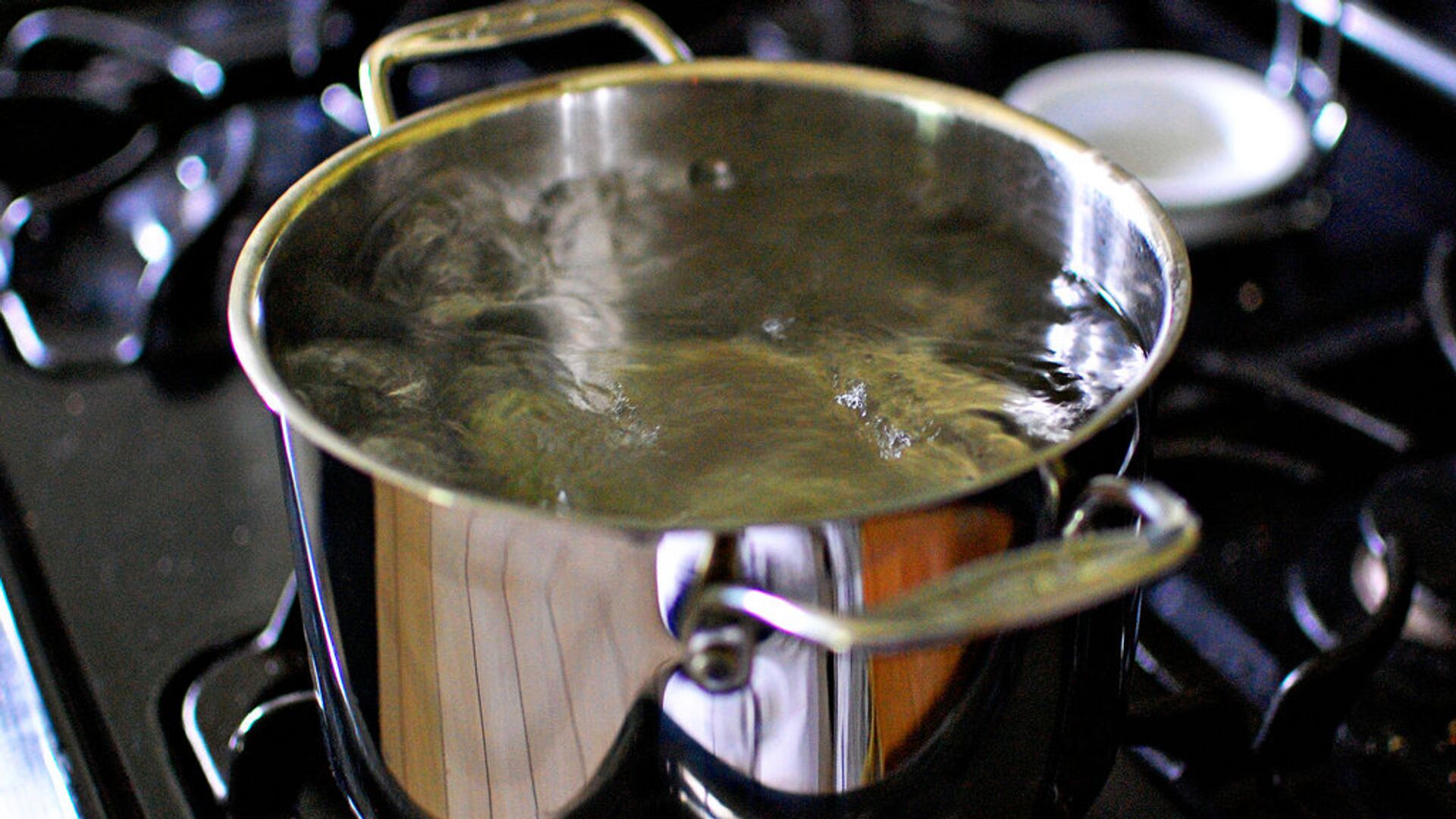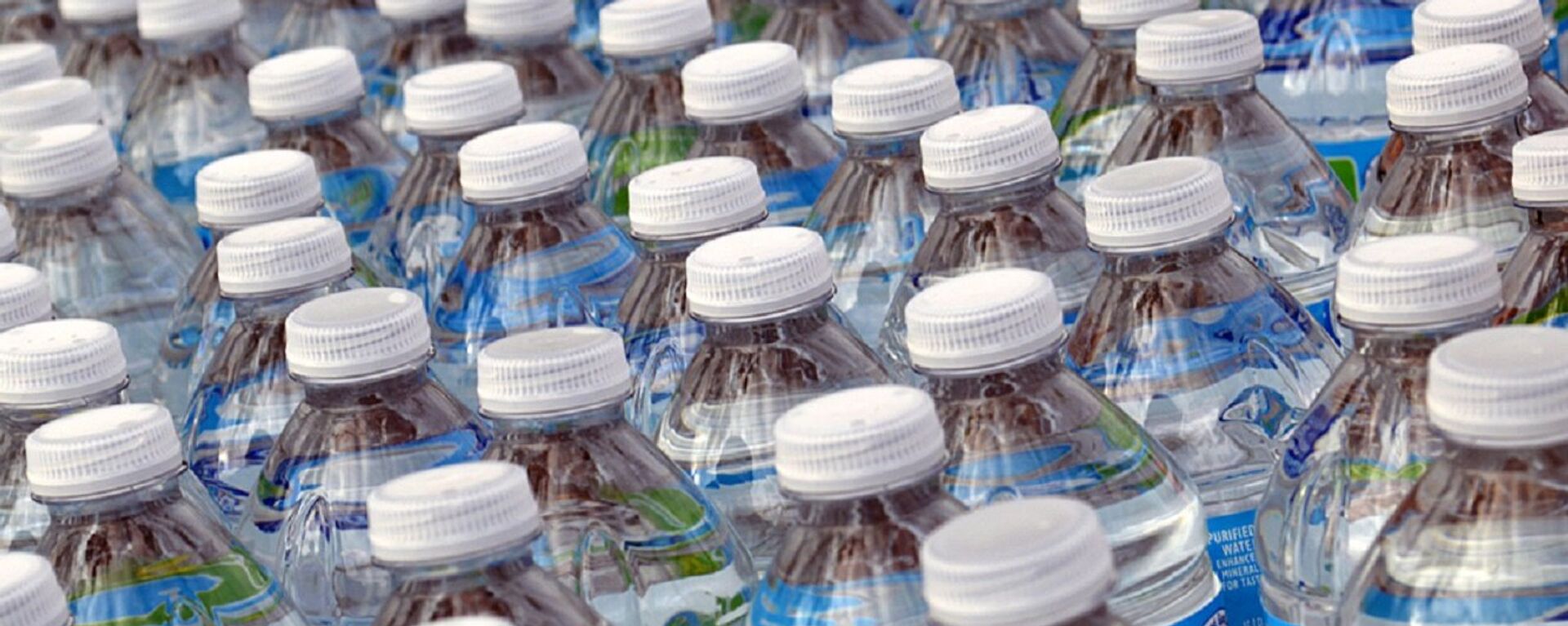https://sputnikglobe.com/20240229/boiling-water-may-help-remove-90-of-microplastics---study--1117047283.html
Boiling Water May Help Remove 90% of Microplastics - Study
Boiling Water May Help Remove 90% of Microplastics - Study
Sputnik International
A new study has found that boiling your drinking water could help reduce the amount of microplastics in it by nearly 90%. The findings, published Wednesday in Environmental Research Letters, looked at the impacts of boiling on three compounds commonly found in drinking water: polystyrene, polyethylene and polypropylene.
2024-02-29T05:03+0000
2024-02-29T05:03+0000
2024-02-29T05:03+0000
world
environment
environmental impact
water
water pollution
water consumption
plastic
plastic waste
plastic ocean
microplastics
https://cdn1.img.sputnikglobe.com/img/106679/57/1066795798_0:45:1024:621_1920x0_80_0_0_b1ba0dea4b4a501acbb39192597468b8.jpg
A new study has found that boiling your drinking water could help reduce the amount of microplastics in it by nearly 90%. The findings, published Wednesday in Environmental Research Letters, looked at the impacts of boiling on three compounds commonly found in drinking water: polystyrene, polyethylene and polypropylene.Nanoplastics and microplastics (NMPs) are tiny bits of plastic that can be as small as one-thousandth of a millimeter in diameter, though the definition applies to any small plastic piece that is less than five millimeters long in length.These NMPs, about the size of a virus, are the perfect size to adversely affect how human cells function, and are capable of passing through key protective filters in one’s body including the intestinal lining and blood brain barrier. They have also been found in our food, breast milk and even the clouds in our skies.While the effects of microplastics on human health is still being studied, it is believed that polystyrene is capable of inflaming the intestine and can kill red blood cells. In general, there is also growing evidence that shows plastics can accumulate in the body and trigger oxidative stress, inflammation, insulin resistance, and liver issues.“In addition, microbeads, a type of microplastic, are very tiny pieces of manufactured polyethylene plastic that are added as exfoliants to health and beauty products, such as some cleansers and toothpastes. These tiny particles easily pass through water filtration systems,” the administration adds.The researchers tested their theory using hard water which is a common type of freshwater found in the US known for high levels of calcium carbonate and magnesium. During the five minute boiling process, the calcium carbonates formed in small clumps around the microplastics and trapped them. The leftover residue was then separated and removed from the water using a coffee filter or stainless steel filter.However, they found that boiling water was not effective in removing all of the polymers. And this study only proved effective using hard water or any water that has the addiction of calcium carbonate, while the soft water samples showed only 25% of microplastics were removed. Though for now, boiling water can still improve the health and safety of one's drinking water. The Centers for Disease Control and Prevention (CDC) says that boiling water is the safest way to kill disease-causing germs, including viruses, bacteria, and parasites.
https://sputnikglobe.com/20230708/could-bidens-approach-toward-forever-chemicals-in-water-affect-his-2024-hopes-1111754823.html
https://sputnikglobe.com/20240109/huge-nanoplastic-particles-count-found-in-top-us-bottled-water-brands-1116070822.html
Sputnik International
feedback@sputniknews.com
+74956456601
MIA „Rosiya Segodnya“
2024
Mary Manley
https://cdn1.img.sputnikglobe.com/img/07e6/01/0b/1092187887_0:0:2048:2049_100x100_80_0_0_0c2cc4c84f89aff034cc55bb01fb6697.jpg
Mary Manley
https://cdn1.img.sputnikglobe.com/img/07e6/01/0b/1092187887_0:0:2048:2049_100x100_80_0_0_0c2cc4c84f89aff034cc55bb01fb6697.jpg
News
en_EN
Sputnik International
feedback@sputniknews.com
+74956456601
MIA „Rosiya Segodnya“
Sputnik International
feedback@sputniknews.com
+74956456601
MIA „Rosiya Segodnya“
Mary Manley
https://cdn1.img.sputnikglobe.com/img/07e6/01/0b/1092187887_0:0:2048:2049_100x100_80_0_0_0c2cc4c84f89aff034cc55bb01fb6697.jpg
water, drinking water, microplastics, study, research, water pollution, plastic pollution, water contamination
water, drinking water, microplastics, study, research, water pollution, plastic pollution, water contamination
Boiling Water May Help Remove 90% of Microplastics - Study
According to the US National Oceanic and Atmospheric Administration (NOAA), plastic is the most prevalent type of marine debris found in our oceans.
A new
study has found that boiling your drinking water could help reduce the amount of microplastics in it by nearly 90%. The findings, published Wednesday in Environmental Research Letters, looked at the impacts of boiling on three compounds commonly found in drinking water: polystyrene, polyethylene and polypropylene.
Nanoplastics and microplastics (NMPs) are tiny bits of plastic that can be as small as one-thousandth of a millimeter in diameter, though the definition applies to any small plastic piece that is less than five millimeters long in length.
These NMPs, about the size of a virus, are the perfect size to adversely affect how human cells function, and are capable of passing through key protective filters in one’s body including the intestinal lining and blood brain barrier. They have also been found in our
food, breast milk and even the
clouds in our skies.
While the effects of microplastics on human health is still being studied, it is believed that polystyrene is capable of inflaming the intestine and can kill red blood cells. In general, there is also growing
evidence that shows plastics can accumulate in the body and trigger oxidative stress, inflammation, insulin resistance, and liver issues.
“Microplastics come from a variety of sources, including from larger plastic debris that degrades into smaller and smaller pieces,” the NOAA writes, adding that the issue of microbeads appearing in personal care products first began to occur about 50 years ago.
“In addition, microbeads, a type of microplastic, are very tiny pieces of manufactured polyethylene plastic that are added as exfoliants to health and beauty products, such as some cleansers and toothpastes. These tiny particles easily pass through water filtration systems,” the administration adds.
The researchers tested their theory using hard water which is a common type of freshwater found in the US known for high levels of calcium carbonate and magnesium. During the five minute boiling process, the calcium carbonates formed in small clumps around the microplastics and trapped them. The leftover residue was then separated and removed from the water using a coffee filter or stainless steel filter.
“Elevated temperatures promote CaCO3 nucleation on NMPs, resulting in the encapsulation and aggregation of NMPs within CaCO3 incrustants,” the researchers wrote. “This simple boiling-water strategy can ‘decontaminate’ [nano- and microplastics, or NMPs] from household tap water and has the potential for harmlessly alleviating human intake of NMPs through water consumption.”
However, they found that boiling water was not effective in removing all of the polymers. And this study only proved effective using hard water or any water that has the addiction of calcium carbonate, while the soft water samples showed only 25% of microplastics were removed.
Though for now, boiling water can still improve the health and safety of one's drinking water. The Centers for Disease Control and Prevention (CDC) says that boiling water is the safest way to kill disease-causing germs, including viruses, bacteria, and parasites. 






